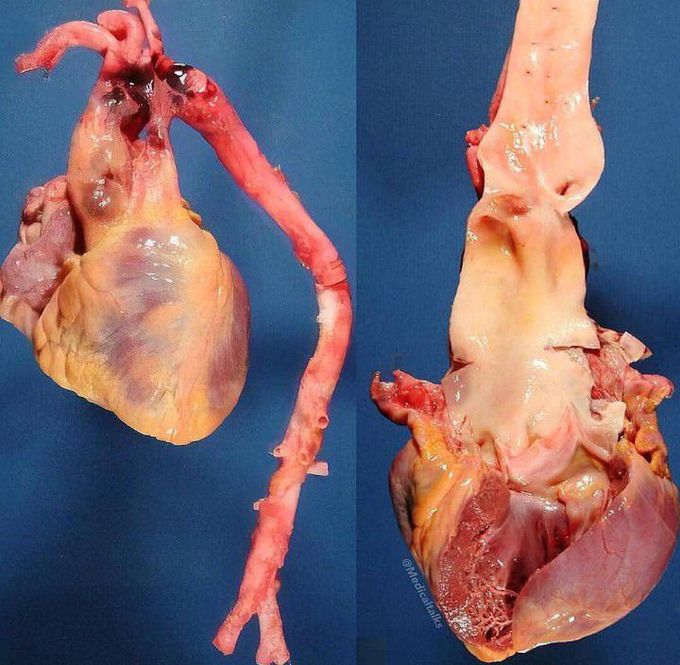

Aortic Dissection!!
About the aorta - It is a gauzy vessel that leaves the heart and is responsible for distributing oxygenated blood to the whole body. This vessel can suffer consequences of poor living habits, such as the formation of aneurysms (dilatation), dissection of the layers (as shown in the photo on the left) and atherosclerosis (formation of fat plaques). Arterial dissection occurs when blood enters the media through a tear or ulcer in the intima and tracks along the media, forming a second blood-filled channel within the wall. The normal lumen lined by intima is called the true lumen and the blood-filled channel in the media is called the false lumen. The false lumen is at a higher pressure than the true lumen due to poor outflow. Aortic dissection is a relatively uncommon, though catastrophic, acute illness. Propagation of the dissection can occur proximal (retrograde) or distal (antegrade) to the initial tear, involve the aortic valve, or branches of the thoracic and/or abdominal aorta. This is responsible for clinical manifestations that can include aortic regurgitation, cardiac tamponade, and end-organ ischemia (coronary, cerebral, spinal, or visceral, extremity). Dissection is classified as Type A if it occurs in the ascending portion of the aorta, or Type B if it occurs in the descending aorta. CT, especially with arterial contrast enhancement is the investigation of choice, able not only to diagnose and classify the dissection but also to evaluate for distal complications. TREATMENT includes aggressive blood pressure control with beta blockers as they reduce both blood pressure and also heart rate hence reduce extra pressure on the aortic wall, as well as immediate surgical repair for type A dissection or complicated type B.
